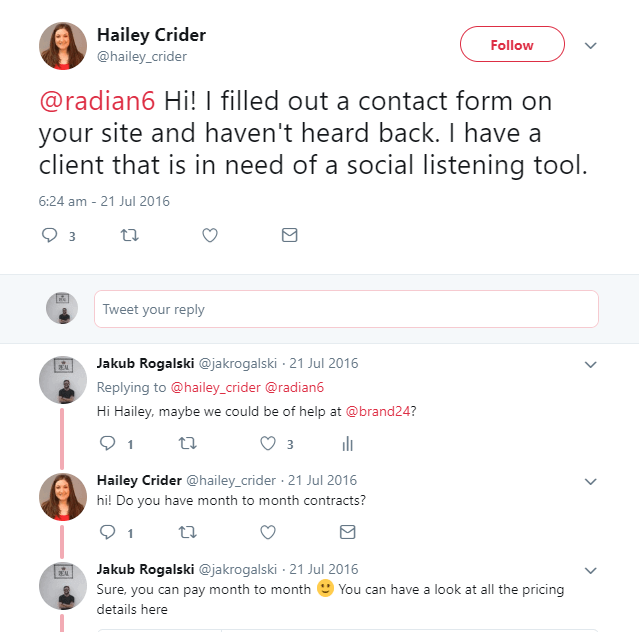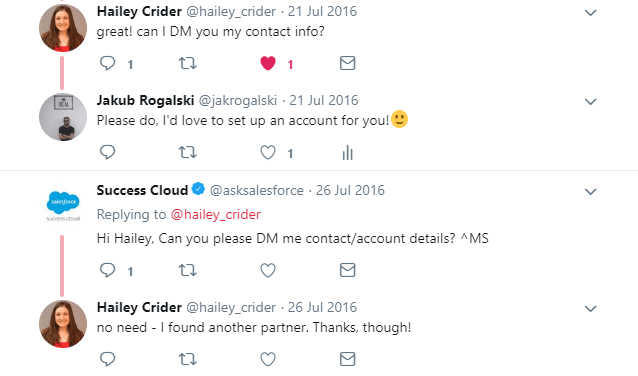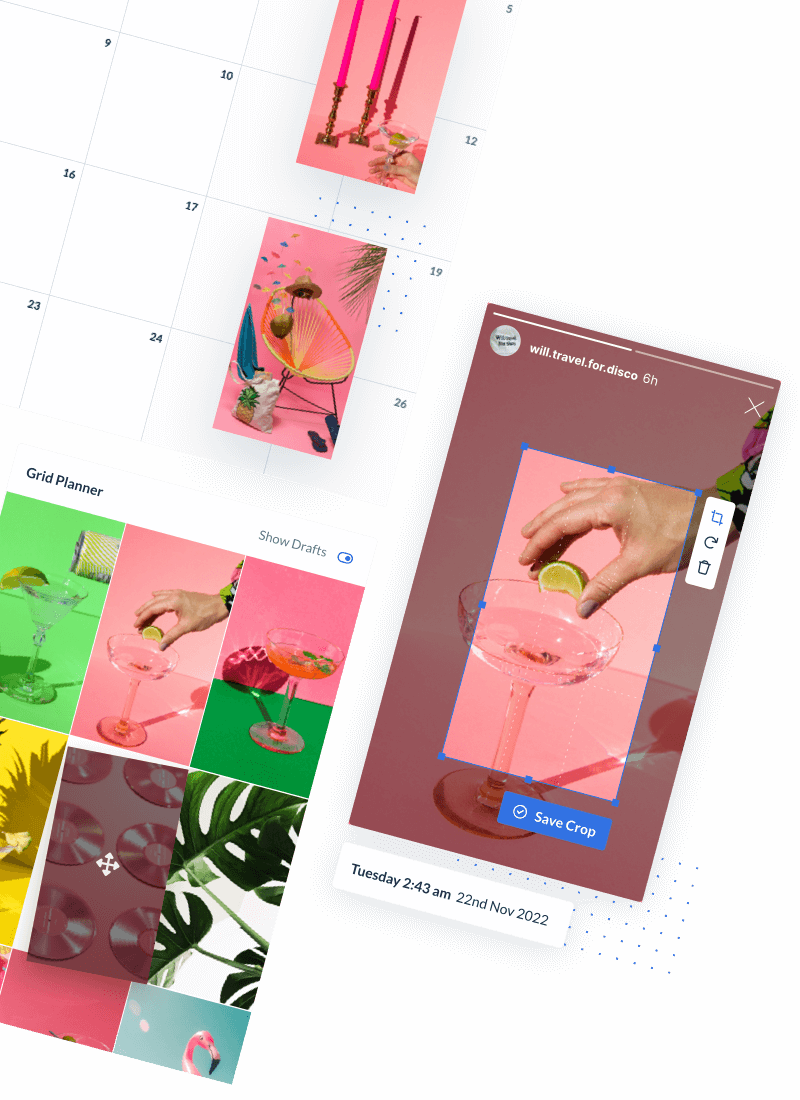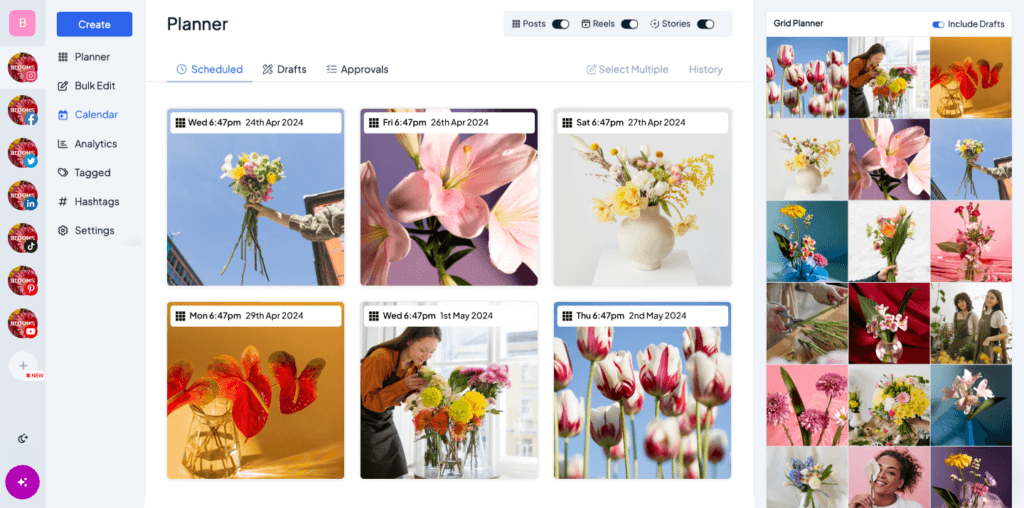Social media has become an essential part of just about every organisation’s marketing and communications strategy. Platforms like Facebook, Twitter, Instagram and TikTok allow for the rapid spread of information, which can be a double-edged sword for your brand. On the one hand, a viral post can be great for publicity, but any mistakes or mishaps may be quickly called out online and can ruin your reputation; Enter social media monitoring ✨
There are several social media monitoring tools out there that will track mentions of your brand on social media to keep an eye on what people are saying about you.
But before you get the ball rolling on your social media monitoring, it’s important to be aware of the potential pitfalls. That’s why, in this article, we’ll go over some common rookie social media monitoring mistakes to take heed of before they derail your social strategy.
What is social media monitoring, and how can it help you?
Social media monitoring is all about staying on top of all the chatter that is happening around your brand, industry and competitors. It asserts a proactive stance towards all types of correspondence related to your business, regardless of the sentiments attached to them.
By taking note of the conversations that go on around you, you can gather all sorts of valuable information, such as:
- Social share of voice: How visible your brand is in relation to your competition.
- Social ROI: If the money you spend on your brand’s social presence is yielding results.
- Social sentiment analysis: The way people feel and the tone they use when talking about your brand on social media.
- Social trends: The latest trends your audience is captivated by.
- Relevant keywords and hashtags: Which hashtags or keywords your competitors are using and ones you may consider using in the future.
Note that it’s not just quantitative data you’ll be collecting through social monitoring, but also qualitative insights that can help inform your future posts and campaign strategies.
Visually plan your social content. Instagram, TikTok, Twitter, Facebook, LinkedIn + Pinterest
Social monitoring vs social listening
Many people mistakenly believe that social media monitoring and social media listening are the same thing, but they are in fact two very different techniques that should not be used interchangeably.
Social monitoring refers to tracking, identifying, and responding to individual social mentions of your brand, products, and competitors. Social listening, on the other hand, is the process of gathering data from those social mentions and the broader customer conversations to figure out insights that can ultimately be used to improve business results.
You can think of social media monitoring as akin to putting a band-aid on a wound while social media listening helps you understand why the wound occurred in the first place.
Social media monitoring is a short-term solution, in that you react to what your audience is saying — responding to a customer complaint, for instance. Social media listening, however, is a proactive process aimed at creating a long-term solution based on social media insights — for example, fixing a problem that people are complaining about so others do not have the same issue.
Social media monitoring mistakes to avoid
With the basics of social media monitoring sorted out, it’s time to get down to the juicy details. Let’s take a closer look at the most common social media monitoring mistakes so you can keep yourself from making them.
Mistake #1: Not laying out a clear plan before you get started
It’s amazing how many companies try to jump on the social media monitoring wagon without proper planning only to be disappointed when they don’t see any positive outcomes.
But if you have no idea what you need to do, how are you ever going to get results?
Before embarking on your social monitoring quest, take some time to sit down and think about what exactly you’re hoping to accomplish with this new pursuit. Your plan should include measures to minimise risk, such as:
1. Which social media channels you’re going to monitor and why
2. What metrics you’ll track and what they mean for your business
3. How often you’ll check in on things
These are all great places to start when you design your social media monitoring plan. It doesn’t have to be super detailed—just make sure you know what you want from your monitoring tools. Once you’ve got that jotted down, you can begin monitoring your social media accounts.
Mistake #2: Not responding quickly enough
Social media is fast-paced, and the most relevant conversations are often happening in real time. As a brand, you need to be able to react quickly in order to respond appropriately and capitalise on timely opportunities. If you don’t act swiftly, you may lose out on customers. According to the 2022 Sprout Social Index, not responding in a timely fashion on social media causes more than a third (35%) of consumers to turn to a competitor as a result. To further illustrate this point, here’s an example of how Brand24 lured a potential customer away from Salesforce.




Salesforce’s response time in this case was not the best. Not responding to the customer fast enough enabled the competitor to seize the opportunity by responding quickly and offering a solution of their own.
Even if you manage to retain the customer despite slow response time, your brand will not enjoy the same level of engagement. Why? Simply because the people will have either moved on from the conversation or they no longer feel excited about your brand’s social presence.
If you want to see just how quickly a company can respond to customers’ concerns, scroll through Glossier’s Twitter feed. The beauty brand works hard at getting back to social mentions as fast as possible. Just take a peek at the timestamps on this tweet for proof.

Being quick to acknowledge social mentions shows your followers that their voices matter and encourages them to continue engaging with your content regularly. It’s also very important to communicate your message effectively. Responding quickly without being able to communicate efficiently will also look bad on your brand.
If you’re a small business and find that it’s difficult to respond in time because you’re just too busy with other tasks, consider using a virtual assistant service to find someone with a social media focus that can help.
Mistake #3: Not putting social monitoring analytics to good use
Social media monitoring analytics can give you powerful insights if you use them right. The problem is, most people don’t. They read and respond to social mentions—and they never look at the data behind those mentions.
By digging a little deeper into the monitoring analytics, you’ll gain a fuller picture of your social media efforts.
For example, if you evaluate the spike in mentions in relation to the number of damaging mentions, you can gain insight into your audience’s sentiment. In the event that the negative mentions slope is more indicative of the spike, damage control may be needed. You can then assess the extent of your damage control by comparing audience sentiment and reach.
So, don’t think of social monitoring analytics as an isolated data point pertaining to a single task. View it as a constant source of insight that can help drive your social media strategy.
Find the best time to post, track your follower growth, and understand what content works best with post and account analytics.
Mistake #4: Not using social media monitoring to spot relevant trends
Sometimes it is difficult to figure out which social media trends to pay attention to and which ones to ignore. A trend caught at the right time, however, can prove invaluable for your online visibility. Take a look at how Jamie Oliver is raking in the engagement by riding the Valentine’s Day trend.
If you are simply monitoring and responding to social media mentions, then you are not making the most of the tool available. Social media monitoring platforms make sure you’re never caught off guard by keeping you posted on any upcoming occasions and events you may want to include in your social media content calendar.
> Video, gallery & image posts
> Calendar, feed & grid preview
> Instagram, Facebook & Twitter
Mistake #5: Not watching your competitor’s activity
If you’re not monitoring your competitors’ social media activity, you’re missing out on golden opportunities to learn more about them as well as about yourself. Keeping tabs on your competition will provide you with a clear picture of exactly where your social media strategy stands in comparison. You’ll be able to:
- Discover which brands in your industry share the most social media attention.
- Listen in on what other people are saying about your competitors.
- Identify social media influencers who are mentioning your competitors.
- See what social media trends or campaigns made your competitor’s engagement and mentions soar.
Analysing your competitors’ online presence will allow you to uncover massive areas of opportunity. Take, for instance, MoonPie’s response to Hostess, a rival snack-cake brand, that promoted its golden cupcakes during the 2017 solar eclipse. MoonPie noticed the attention its competitor was receiving and sought to turn the tide with its terse, but impactful, tweet.

Mistake #6: Not narrowing down your search
It’s easy to get excited about the sheer amount of details that social media monitoring offers, but you should resist the temptation to overextend the scope of your alerts. It’s better to focus on specific mentions and monitor them closely rather than juggling multiple threads at once. This way, you won’t waste your time going through irrelevant mentions.
For example, when SaaS company Paperbell started monitoring their mentions, they were overwhelmed by volume. Paperbell primarily targeted life coaches, but the term “life coach” includes current working coaches, those who want to train to be coaches, as well as clients looking for a life coach. Over time, Paperbell was able to learn the connotations of different hashtags to narrow their monitoring to only the working coaches that make up their target market.
5 Tips to make social media monitoring work smoothly
Below are a few tips to get your social media monitoring off to a good start:
1. Find a tool that works for you
There are tons of options out there, so start by limiting your criteria based on the type of monitoring you are looking for, then go from there. Then ensure that your chosen social media monitoring tool is compatible with your monitoring needs.
2. Don’t limit your search to your handle
It’s not uncommon for brands to have alternative names. Abbreviations, different names for social accounts, common typos etc. Consider all possible variations of your brand’s name when defining your query.
3. Get to know your users
Get to know the users who mention your brand or product regularly on social media. Building relationships with them will make them more likely to become your brand advocate over time.
Monitoring platforms for social media keep evolving at an accelerated pace, some platforms now come with dedicated modules to find potential leads. Put in the keywords people would use to search for your products or services, and you will receive a stream of leads in return. To increase the chances of converting prospects into real customers, stay in touch with them, and answer any questions they may have about your offerings. If you operate an offline store, you can also share QR codes encoding the exact location of the store for prospects to check out your offerings.
4. Consider hiring someone dedicated to social media monitoring
Social media monitoring is one of the most valuable tools in any business’ arsenal—but if you don’t have time to get it right, hiring someone who does is a great idea. Just make sure to lay out all of your expectations, goals, and objectives with crystal clarity, during the social media proposal creation process.
5. Be on the lookout for unusual activity
Social media crises can occur at any time. Configure your monitoring software to notify you when mention volumes spike or social sentiment meters flash red.
FAQs
How do social media monitoring tools work?
A vast majority of social monitoring tools work by crawling and indexing social media platforms in search of pre-determined keywords.
When will social media mentions appear in the monitoring report?
All the brand keywords, search results, and hashtag mentions show up in almost real-time in your social monitoring tool dashboard.
How to decide on what mentions you want to monitor?
In accordance with your goals, you may decide to monitor conversations about your brand, products, services, industry, competitors, and their products. Additionally, keywords associated with recent marketing campaigns or phrases used by people who might be in need of your product can also be monitored.
What social media channels should you monitor?
The internet is an ever-evolving plan, and you can’t control whether people talk about your brand on Facebook, Reddit, Twitter, Snapchat, personal blogs, or any other places. For this reason, it’s important to monitor mentions across all channels, or at least all the major ones.
Check out the latest from our blog:
Visually plan your social content. Instagram, TikTok, Twitter, Facebook, LinkedIn + Pinterest.











